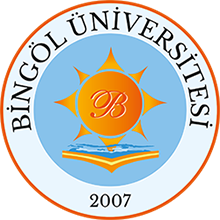Assessment of Antimicrobial and Antioxidant Activities of Nepeta trachonitica: Analysis of Its Phenolic Compounds Using HPLC-MS/MS
View/
Date
2017Author
Köksal, Ekrem
Tohma, Hatice
Kılıç, Ömer
Alan, Yusuf
Aras, Abdulmelik
Gülçin, İlhami
Bursal, Ercan
Metadata
Show full item recordAbstract
Continuing our work on the sources of natural bioactive compounds, we evaluated
the antimicrobial and antioxidant activities of Nepeta trachonitica as well as its major phenolic
content using the high-performance liquid chromatography-mass spectrometry/mass spectrometry
(HPLC-MS/MS) technique. For antioxidant activity, ferric reducing antioxidant power (FRAP)
and cupric ion reducing antioxidant capacity (CUPRAC) methods were performed to measure
the reducing power and 1,1-diphenyl-2-picrylhydrazyl (DPPH) assay was employed to evaluate
the radical scavenging activity of the sample. For antimicrobial activity, three Gram-positive and
four Gram-negative microbial species as well as three fungi species were tested. N. trachonitica
appeared to have reasonable antioxidant activity and decent antimicrobial activity as indicated by the
inhibition of the organisms’ growth. The most susceptible species were Bacillus subtilis ATCC 6633 and
Escherichia coli ATCC 11229 among the organisms tested. Ethanol extract of the plant has the highest
effect on Saccharomyces cerevisiae but no effect on Yarrowia lipolytica. The HPLC-MS/MS analysis
showed that at least 11 major phenolic compounds of N. trachonitica exist, the major ones being
rosmarinic acid, chlorogenic acid and quinic acid. The obtained results suggest that N. trachonitica
could be a promising source for food and nutraceutical industries because of its antimicrobial and
antioxidant properties and phenolic compounds.
Collections

DSpace@BİNGÖL by Bingöl University Institutional Repository is licensed under a Creative Commons Attribution-NonCommercial-NoDerivs 4.0 Unported License..













